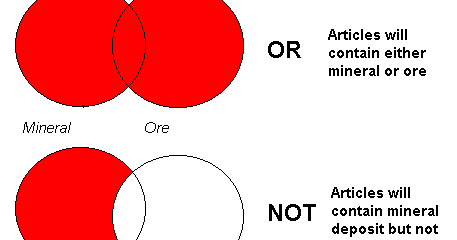
Using Boolean search, you can be able to: Therefore, using Boolean searches, you can monitor mentions that are flooding in more effectively. Without further ado, let’s get started! So, What Can You Achieve Using Boolean Search?ĭid you know that main search engines like Google use Boolean search? We have already indicated that Boolean Search in brand monitoring helps you to get more precise. Towards the end, we will also focus on the Mentionlytics tool and how you can effectively use Boolean search criteria to monitor your brand online using it. Then, we will look at some of the basics you need to effectively use Boolean Search. First, we will identify what you can achieve using Boolean Search as the basis for brand monitoring.
BOOLEAN SEARCH TOOLS HOW TO
In this article, our focus is to educate you on how to use Boolean Search for a better brand monitoring experience. The most commonly used Boolean operators are AND, OR, Not, and NEAR. Therefore, you can always drill down to the specific mentions that matter to your brand. In short, the Boolean operators provide your search tool with some criteria to use when searching a database. Therefore, by using Keywords and Boolean Operators in your brand monitoring, you restrict or widen the searches. Simply defined, Boolean Search uses Boolean logic to search for certain words or phrases through massive amounts of data. But did you know that Boolean Search can improve the experience?īefore we jump into teaching you how to use Boolean Search for brand monitoring, we want to make sure you understand the basics. Even worse, they are swamped in irrelevant mentions about brands with similar names! This is the main cause of dilemma for brand managers, PR desk executives, and marketing executives while trying to implement online brand monitoring. Unfortunately, many companies will miss a handful of high-value mentions simply because the tool uses poor search strategies. While doing so, they hope they will be able to monitor their brand effectively. This retrieved too many irrelevant results as "Alberta" as a keyword can be problematic.Searching online mentions can sometimes seem to be a daunting task! Companies subscribe to different brand monitoring tools. The following are just two examples of searches using "nested" Boolean phrases and symbols: There are various ways to design effective searches using Boolean operators. Using Boolean operators between your search terms using parentheses (called nesting) can help you achieve this, and is essential for constructing an effective search strategy. One of the biggest challenges in searching for information is finding a manageable number of relevant results. Using the * will retrieve all forms of that word.įor example: use manag * to find the words manag e, manag er, manag ement, manag ing, etc. Enter the root of a search term and use an * to replace the ending.

Using Truncation: Use Truncation when there are multiple spellings and various endings of search terms. NB - This technique will not be recognized if used inside inverted commas " "


Use the # wildcard to find a term with an alternate spelling containing an extra character.įor example: use labo #r to find all records containing labor or labo ur.When you enter your search terms, replace each unknown letter with a ?.įor example: use organi ?ation to find records containing organi sation or organi zation. Use the ? wildcard to match one letter.Using Wildcards: Use wildcard symbols to create a search where there are unknown characters, multiple spellings or various endings. You can search for a phrase by combining single search terms in quotation marks " ".

Searching for a phrase: Using phrases instead of singe word search terms will help reduce the number of results.


 0 kommentar(er)
0 kommentar(er)
